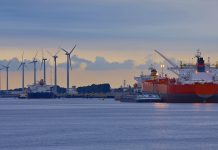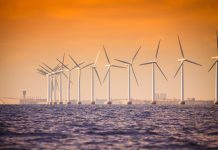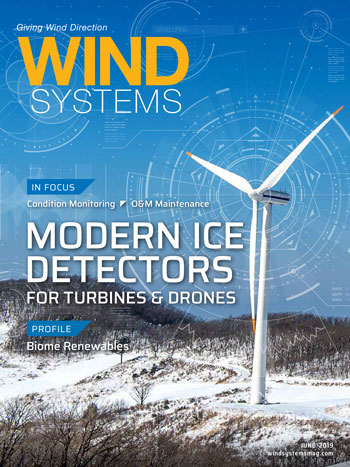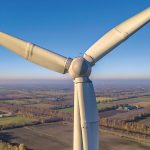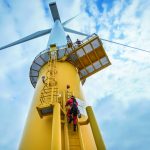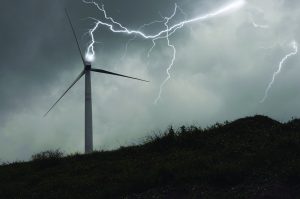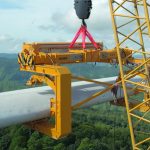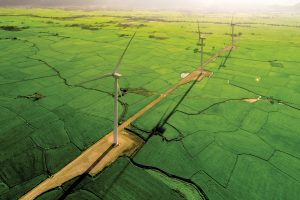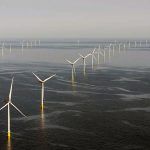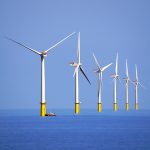Wind power is on the rise. In the U.S. alone, the wind industry invested more than $11 billion in new power plants in 2017 and added more than 7,000 MW of new capacity, representing a full 25 percent of all electric capacity additions across the broader energy industry. In April, the U.S. Department of Energy announced $28.1 million in funding aimed at advancing wind energy nationwide across the land-based, offshore, and distributed wind sectors. However, as with other renewable energies, the wind-power industry faces many obstacles. One of the biggest challenges to growth remains the high costs of constructing wind farms, as well as the ongoing operations and maintenance costs. The industry also still relies heavily on government subsidies and federal tax incentives, which can be unreliable and phased out, depending on whichever way the ‘winds’ of the current political climate are blowing.
While utility-scale wind energy in the United States has grown to 90 GW, significant opportunities for cost reductions remain, especially in the areas of offshore wind, distributed wind, and tall wind. To further its growth, reduce costs and increase profitability, the wind-power industry needs to turn to emerging technologies, including the Internet of Things (IoT), autonomous drones, earth-modeling technologies, and 3D printing. Research, development, and demonstration of innovative wind technologies have the potential to drive down costs and expand the success seen in the land-based, utility-scale wind sector to the emerging distributed wind and offshore wind sectors.
Here’s a look at five key emerging wind-power technologies, the complex problems they solve, and the impact they will have in the coming years.
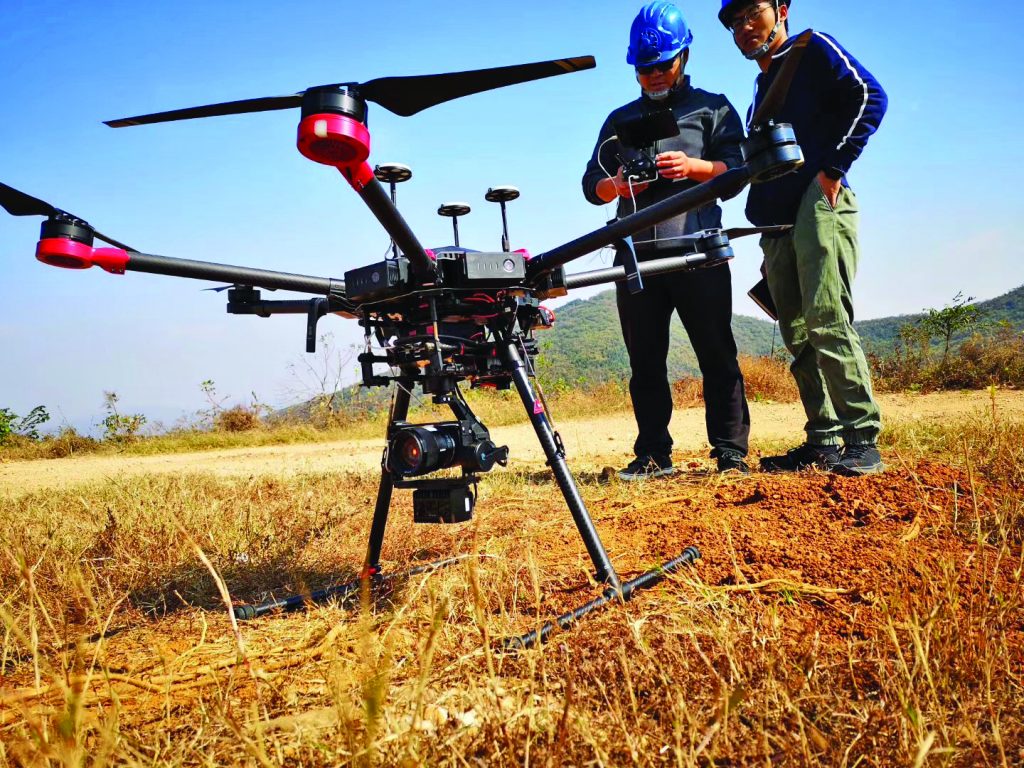
Earth Modeling Technologies for Site Identification
The process of identifying the optimum location to build a wind farm is known as siting. Increasingly, energy companies are turning to technology to improve siting decision making.
The most common approach uses artificial intelligence together with satellite remote sensing, global positioning systems, and open source geographic information systems to analyze a wide variety of data to determine the best locations to not only build farms, but also where, precisely, they should place each turbine. Another approach involves using Big Data simulations to model the Earth to allow wind-power companies to divide the surface down to 30-by-30-kilometer high-resolution grids and estimate the amount of wind power generated in each individual square.
Through sophisticated computer modeling techniques, wind farms can estimate the return on investment (ROI) for each location or turbine, helping them determine potential profitability and make smarter investments.
IoT in the Manufacturing Process
Even before wind farms are built or turbines are installed, IoT technologies, advanced data analysis, and AI are being applied throughout every step of the supply chain in the turbine manufacturing process. Today, more than 80 percent of nacelle assembly and tower manufacturing for turbines installed in the U.S occurs domestically.
Using RFID tags and IoT sensors affixed to components, turbine manufacturers track and trace each part as it works its way through the supply chain, assuring provenance of components, identifying delays or bottlenecks in manufacturing, even monitoring the condition of components at each point in the chain of custody. Data from IoT sensors on the manufacturing machines themselves enable predictive maintenance so manufacturers can repair machines before they develop problems that could shut down the production line and cause costly delays.
With these types of IoT technologies and data analysis enabling greater automation and increased efficiency in the manufacturing processes, domestic wind-turbine manufacturers have been able to dramatically increase productivity in recent years.
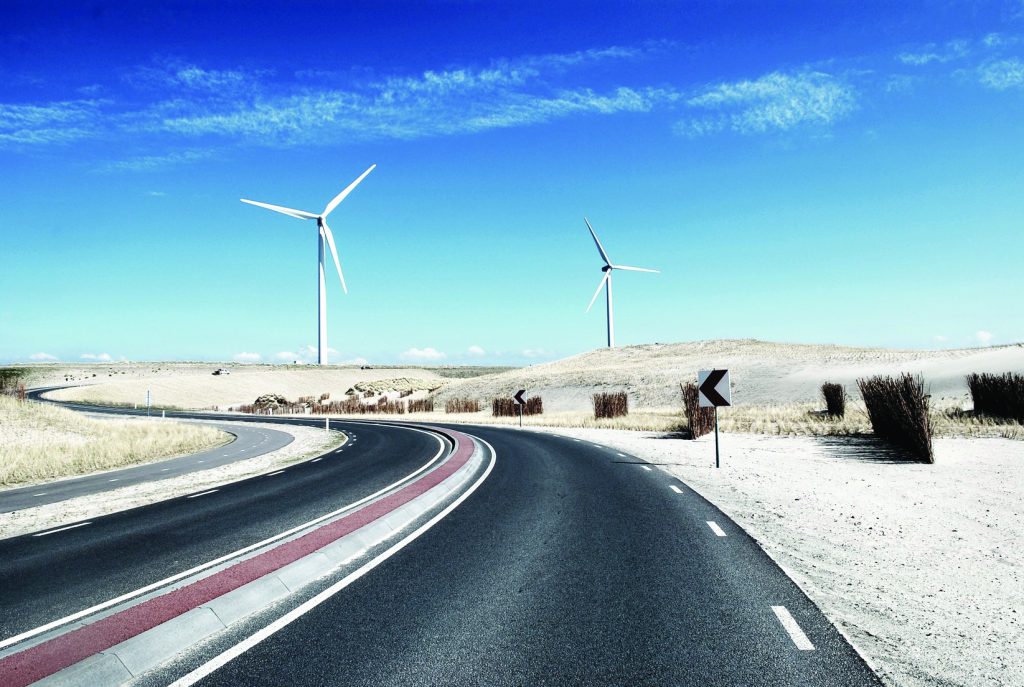
3D Printing
Innovation in the design and manufacturing of wind-power generation components continues to be critical to achieving our national renewable energy goals. Large-scale 3D printing technology is being used more and more by companies to develop complex projects for the energy industry, including big structures such as solar panels or vertical wind turbines.
The U.S. Department of Energy (DOE), for example, has started exploring 3D printing for blade molds, partnering with public and private organizations to apply additive manufacturing to the production of wind-turbine blade molds, which could help save significant time and money during the blade molding and manufacturing process.
The traditional method of blade design requires the creation of a plug, or a full-size representation of the final blade, which is then used to make the mold. Creating the plug is one of the most time-intensive and labor-intensive processes in wind-blade construction, so 3D printing can save these critical resources.
Autonomous Drones for Turbine Inspection
Though many turbines today are equipped with a variety of IoT sensors measuring vibrations, sounds, and more, wind-farm operators still need greater — and earlier — visibility into the condition of blades. Emerging technologies such as autonomous drones equipped with artificial intelligence (AI), machine learning (ML), and advanced computer vision are making a dramatic impact.
Traditionally, visual inspections required shutting down a turbine and sending one or more highly trained technicians up the tower, on ropes, to inspect the blades. A typical inspection could take six to eight hours per turbine. By using autonomous drones for visual inspections, wind-farm operators are able to complete turbine inspections in as little as 15 minutes. Furthermore, by leveraging AI and ML, these autonomous drone solutions are able to analyze huge volumes of data in the cloud, almost instantaneously, and deliver real-time insights to help wind farms identify trends and make decisions to improve operational performance.
Using autonomous drones for visual inspections has demonstrated promise such that analysts estimate the market to grow at a compound annual growth rate (CAGR) of 12.93 percent during the period of 2017 to 2021 as more and more farms adopt this technology.
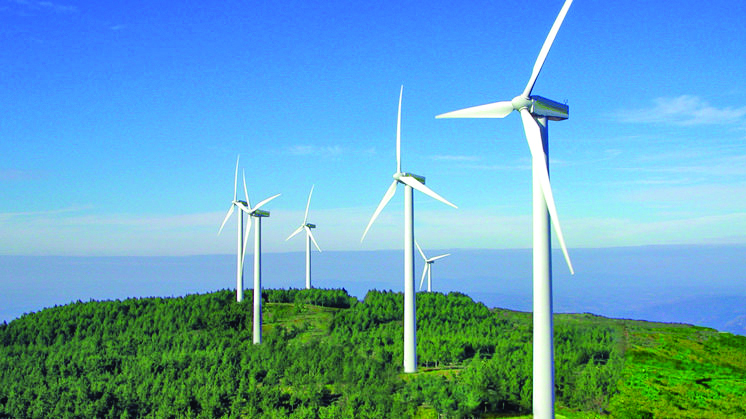
Data Analytics for Predictive Maintenance
In addition to using data analytics to identify necessary repairs and existing blade damage on turbines, some wind farms are using the data collected from their systems to predict when faults will occur and schedule maintenance before it’s needed. The longer a wind farm waits to fix a problem, the costlier it becomes as turbines need to be powered-down and are not producing electricity.
An article in Composites World reported that an out-of-service turbine can cost $800 to $1,600 per day, with most repairs taking one to three days. If a crane is required to repair or replace a blade, the cost can run up to $350,000 per week. An average blade repair can cost up to $30,000. A new blade costs, on average, about $200,000.
With the real-time data from visual inspections and turbine sensors, wind-farm operators are able to understand the growth rate of defects and determine if component failure is imminent. Predictive and preventative maintenance allows operators to save time and money by scheduling maintenance in advance, with the ability to schedule repairs for times of year when the weather conditions are best.
As new digital technologies continue to proliferate, we are beginning to see the many ways they can be used to transform the global wind-power industry and drive further growth. From reducing downtime and extending the life of turbines, to improving energy production and increasing productivity, these emerging technologies are helping create a smarter and more sustainable energy sector.
















